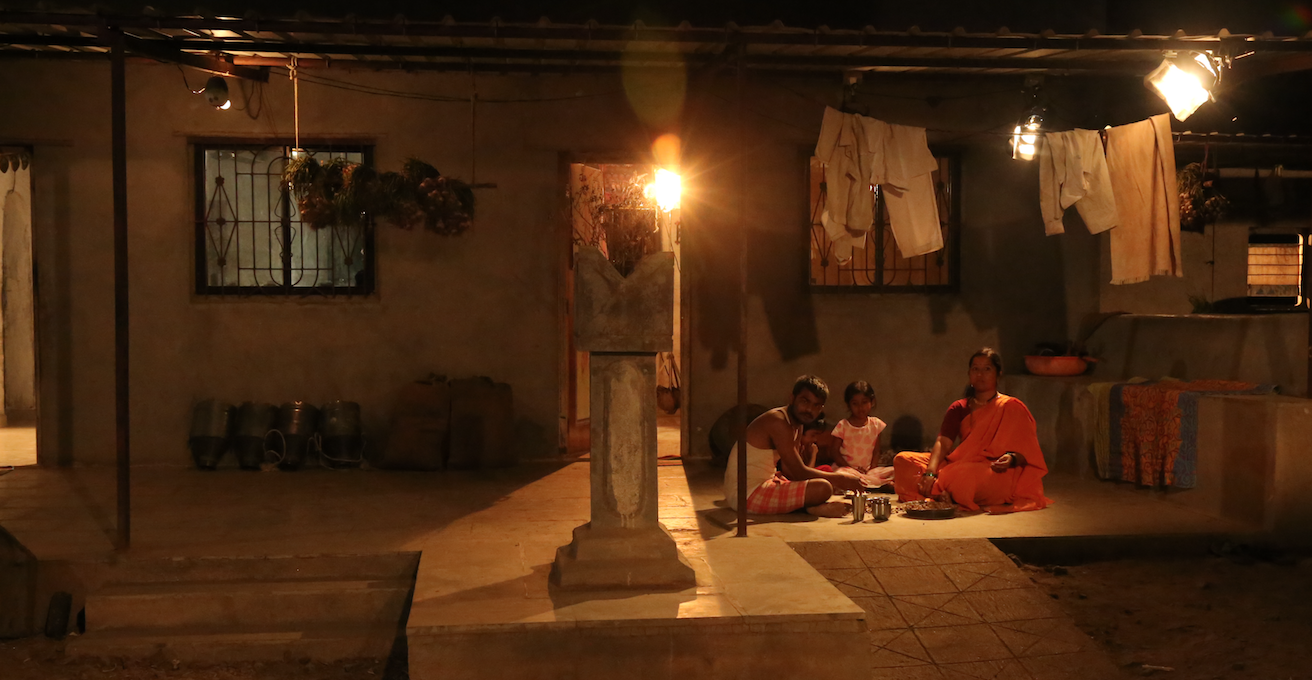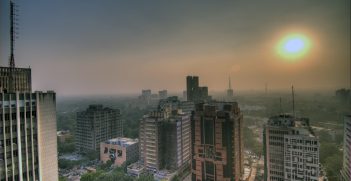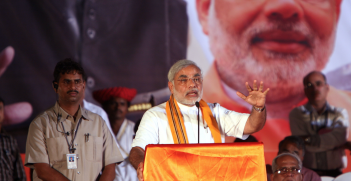India “Modi-fied” Again: Why and What Next?

Prime Minister Narendra Modi and the Bharatiya Janata Party (BJP) led government are entering their second term in office with an even greater majority.
The highly-polarised 2019 elections — fought on issues ranging from economic development, the distressed situation of farmers, intolerance and secularism, unemployment and national security — saw many noteworthy historical records set and widespread myths busted.
It was the first time since 1971 that an incumbent prime minister entered a second term with a clear cut majority. The BJP-led National Democratic Alliance (NDA) secured a total of 353 seats out of total 545 in the Lok Sabha — India’s Lower House — with 303 seats won by BJP itself, up from 282 in 2014.
The result reinforces the BJP as a dominant political party, moving Indian politics towards “One Party Dominance.” NDA has an overwhelming majority over its main opposition, the Indian National Congress (INC) Party, which leads the United Progressive Alliance (UPA). Essentially, no party qualifies as a real opposition to BJP: the INC’s 52 seats failed, once again, to secure even 10 percent of the total seats in Lok Sabha.
Unlike previous elections, corruption and inflation were absent as salient issues, primarily due to the “Modinomics” that has continued and improved on India’s 1991 economic reforms, and fostered a corruption-free government.
This election busted the myth of caste as a dominant factor, with the caste-based Mahagathbandhan — the anti-BJP Grand Alliance — rejected by voters. The caste factor was however a consideration in filling the candidates from the alliances and various parties.
Reasons Behind the Outcome
The election results can be attributed to many reasons. These include the Modi Government’s credentials on national security and counter-terrorism, with its tough response to adversaries around its north-western borders and the sudden revival of nationalism after it launched an airstrike on terrorist camps in Pakistan’s territory following the Pulwama terror attack.
But what really attracted the voters towards Modi and the BJP, was their performance on the fronts of development and economic reforms: including establishing welfare schemes, infrastructure development and energy security.
Under the Modi government, India’s economic growth rate increased from around 5 percent in 2014 to around 7 percent, making India the fastest growing major economy in the world, surpassing China. The government embarked on a series of developmental initiatives, delivered on infrastructure development and addressed the basic needs of people on a massive scale.
The Modi Government has delivered clean energy security programmes, including providing 100 percent village electrification, and pursued the much-needed Swatchh Bharat Abhiyaan — Clean Indian Mission — under which 90 million toilets were constructed, potentially saving more than 300 thousand people from disease and protecting millions from various diseases.
When Modi came to power India had an village electrification deficit, with 18,000 villages still needing to be electrified: and Modi delivered on this too, successfully providing electricity to every village in India.
Over 60 million below-the-poverty-line (BPL) households were connected to clean fuel, and under the Pradhan Mantri Jan Dhan Yojana (PMJDY) financial inclusion programme over 356 million bank accounts were opened, allowing direct deposits to beneficiaries.
The Modi government also restructured India’s public health system by capping the price of critical drugs, providing more healthcare funding which, through the launch of “Modicare” in 2018, gave healthcare cover — of up to 500,000 rupees — to 500 million people.
Schemes such as Mudra Scheme gave collateral-free microloans to new start-ups and entrepreneurs, and a unified goods and service tax for the entire nation resulted in more efficient tax collection, allowing the government to embark on welfare schemes.
Despite the Modi government’s failure to create enough jobs, people’s faith was restored in Modi’s ability and self-confidence to deliver on the economic front.
The Opposition’s Mistake: Modi is not a Divider but a Unifier
The BJP’s organisational strength, strategic alliances and coordination with NDA partners were too strong for the disoriented opposition, which had weak organisational strength and relied on family legacy and caste-based politics.
Though they invoked the issue of secularism, this hardly resonated with the young Indian voters. India’s opposition parties prioritised threats to secularism on their election agenda, targeting Modi as a divider: which led Western media — especially the BBC, CNN, Time Magazine and the Guardian — to consistently portray Modi in a negative light.
However, Modi turned out to be unifier and the BJP increased its share of votes, expanded its base across India, including across the north-eastern states and the old communist party bastion of West Bengal. Even in states where it could not win a single seat, its share of votes increased. Overall, the BJP’s vote increased to 37.4 percent in 2019, up from 31.3 percent in 2014. And the seat share of the BJP in Lok Sabha now stands at 55.8 percent, an increase from 51.9 percent in 2014.
Modi turned the election into a referendum on himself and took the nation in his stride. He projected himself as a chowkidar — custodian — of the nation and as a messiah of development. With the airstrike on Pakistan-based terror attacks in the Kashmir region, Modi consolidated his position.
It was the majority of the vast multi-religious, multi-linguistic, multi-ethnic society — in the world’s largest democracy — that allowed him to secure a landslide victory. Indians themselves affirmed Modi as a unifier, not divider.
High Expectations for Modi Government 2.0
The Modi government 2.0, with 58 on its Council of Ministers, is faced with the daunting task of fulfilling the high expectations set forth in the BJP’s 2019 Election Manifesto. The manifesto lists 75 milestones to be achieved on the 75th anniversary of Indian Independence in 2022. These include doubling the income of farmers, increasing tax rebates to entrepreneurs and new start-ups, keeping up with growing urbanisation and development with world-class infrastructure, creating jobs for the millions of young Indians entering the job market and achieving equitable progress across all the geographical regions, gender, class, and social groups. Ensuring gender parity in employment, especially for rural women, is an important priority.
The biggest challenge, however, is to bring the economy back on track. Unemployment is the highest it has been in the last 45 years. The economic growth rate has registered lowest since 2014 amid weaker consumer demand and fixed investment. The Indian economy witnessed a growth rate of 5.8 percent year-on-year in the first quarter of 2019. This was a decline from a 6.6 percent expansion in the last quarter and not meeting market expectations of 6.3 percent.
This downturn is expected to end as soon as investment increases, meaning India’s biggest challenge is to kick-start the investment process. But with a stable majority for the next five years, the Modi government 2.0 can continue its policies and can afford to take bold measures to bring the economy on the track, attract investors and give a boost to “Made in India” campaign, as well as tackling unemployment.
As the economic and development concerns have overtaken identity-based politics in India, these challenges are not about to go away: and the Modi government 2.0 faces high expectations.
On the foreign policy front, there is likely to be continuity on the Modi government’s foreign policy, driven by domestic and international factors. The need for economic development and increased employment will see a renewed push to attract the FDI. “Made in India” will not only help India to move towards defence modernisation but also create jobs in the manufacturing sector. Energy security will continue to push India towards finding new energy sources abroad, including in Africa, Latin America and the waters of the Indo-Pacific region. This is likely to mean deepening the strategic partnership with the US, enhancing economic engagement with the EU, continuing its warm strategic partnership with Russia, Japan and Israel, and expanding its foreign policy engagements with Middle Eastern and Indo-Pacific nations, including Australia, and carefully navigating relations with its two adversaries and neighbours: China and Pakistan.
Modi and the BJP into the Future
In fact, all the surveys or opinion polls conducted over the last five years showed Modi as the most favoured PM, far ahead of his nearest rival, Rahul Gandhi. Modi’s self-confidence, leadership and charisma have connected with India’s masses and younger generation, who have grown up seeing the BJP as the leading party. The BJP’s organisational strength is difficult to match for the opposition, which was led to one of the most demoralising defeats in recent Indian electoral history.
This trend is here to stay, and the 2024 election will also be difficult for the opposition. As Modi said, the election outcome reflects the birth of a new India that has rejected the politicisation of secularism.
PM Modi’s first tweet after his election victory was about working towards an Inclusive India, and his first speech after as re-elected NDA leader emphasised the need to instil confidence among minorities and remove unfounded fears.
These trends will only create further challenges for the opposition in 2024.
Dr Ashok Sharma is a visiting fellow at the UNSW at the Australian Defence Force Academy. He is also adjunct associate professor at the Institute of Governance and Policy Analysis, University of Canberra and deputy chair of the New Zealand Institute for International Affairs, Auckland.
This article is published under a Creative Commons Licence and may be republished with attribution.





